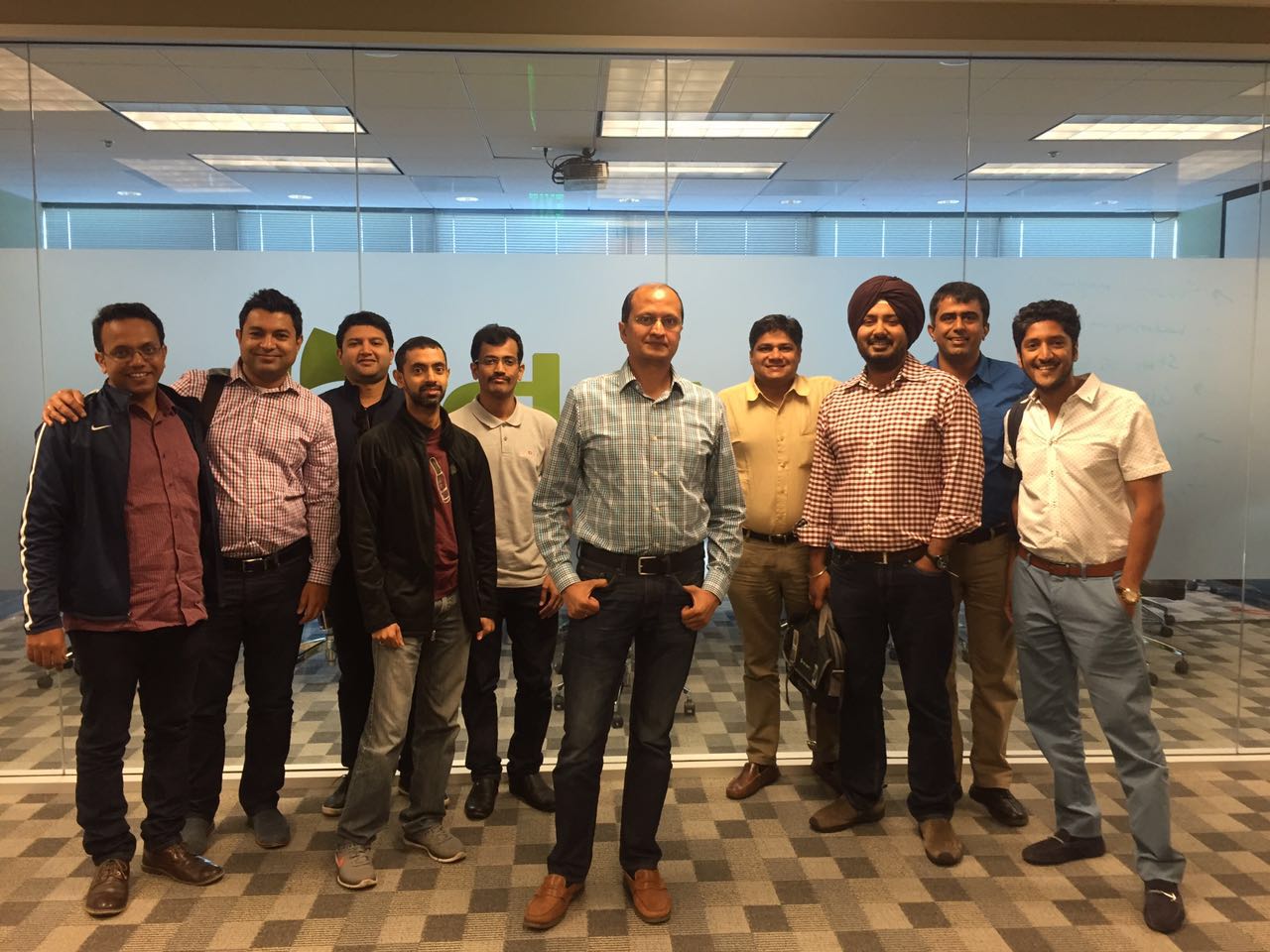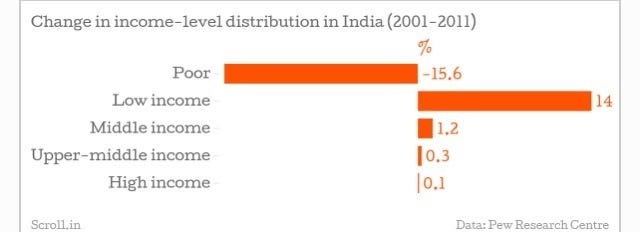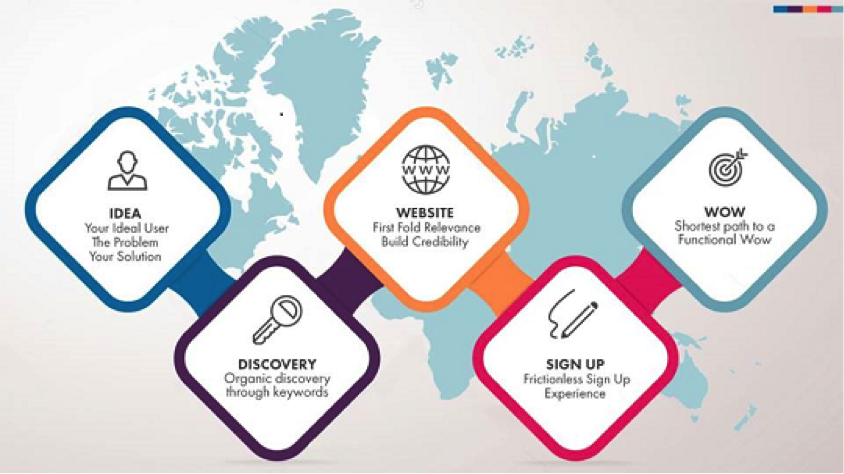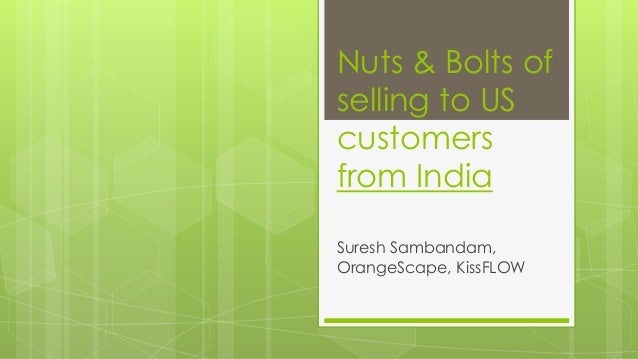The year is 2030. India is a developed, happy democracy. With a population of over 1.5 billion, it has become a role model for other nations, both developed and developing, in putting public digital infrastructure to enable paperless, presence-less, frictionless transactions.
The new generation does not know what a government office looks like and has not encountered government bureaucracy. Instead, what they interact with is an omnipresent, government digital infrastructure that delivers services instantly — from anywhere with no paperwork, only with their consent and their privacy protected.
We describe the typical activities of life as it progresses from the view of two generations.
The story
Radha and Rahim live in a remote village in India and are expecting their first child. The government provides financial assistance to the pregnant mother, Radha, for a healthy diet. The financial assistance is transferred to the Aadhaar-linked bank a/c using the Unified Payment Interface (UPI) infrastructure. Radha can use the money and the UPI system to pay for nutrition in a cashless manner at any shop for supplies. Her pregnancy monitoring medical reports are delivered to her Digital Locker electronically. With her active consent. she can share these reports electronically with other doctors or agencies to assist her in the decision-making process during the pregnancy period. Further, Radha can, again with her active consent, share her anonymised pregnancy reports for data analytics, which will in turn promote the understanding of major medical trends in the neighbourhood, region, state and country.
Soon, Radha and Rahim are now blessed with a beautiful girl. They name her Rani.
When Rani is just about a month old, her parents get her an Aadhaar identity. Since the day Rani started understanding concepts like her name, her identity, etc, she also knew she has a unique identity number, called the Aadhaar number. Even before she could walk, Rani had a bank account. So as she grew up, Rani would provide her Aadhaar number as part of her identity at various interaction points. Be it getting a scholarship in school, her education progress reports, her medical reports, her insurance policies, her bank a/c details, and so on, all these documents are conveniently available in here Aadhaar-linked Digital Locker. Rani can conveniently access and share these documents with her active consent.
In Rani’s mind, there isn’t much difference between a bank a/c and an email account. While one holds and transacts with money, the other holds and transacts with emails. For Rani, her Digital Locker account is the only locker she understands, and this is where she can find and keep her documents safe. She never has to worry about maintaining physical documents or their photocopies as the Digital Locker is a hassle-free system.
Rani, Radha and Rahim visit the local medical centre periodically for routine check-ups and immunization. Their medical progress records get digitally stored in their respective Digital Locker accounts. If during the medical interaction, a new doctor wishes to refer to their historical medical record, the same is available to the doctor after s/he gets active consent from the patient.
Back in the days…
Rani once went to the ‘bank branch’ to open a new a/c. This field trip was part of a ‘museum tour’ for her class to understand how banks used to work in the past. When she stepped inside the branch, she was shocked to see old photographs showing how people would carry papers and files of their identity papers, stand in long queues at the counter and submit photocopies to have a bank account opened, in the past.
In this museum bank branch, she witnessed old cheque leaflets, passbooks and various forms which were used for withdrawing and depositing money in the bank being preserved in glass displays. This was all very strange for Rani because the only physical currency that she had ever seen was in a preserved format at her home. The visit sparked Rani’s curiosity. When she got home that evening, she asked her parents about how her generation’s life differed from theirs.
Rani’s question took Radha and Rahim on a nostalgia trip to the times before 2010, when they struggled to access basic services. They narrated the ordeal they faced, starting from establishing their identity at various government departments for any service delivery, the umpteen number of photocopies of their psuedo-identity papers such as ration card, voter id, etc, that they would need to submit. In addition, since Radha and Rahim were young and would move depending on where they found work, it would be hellish to establish their identity in different cities and towns in the same country. This was so because one state would not recognise an identity document issued by another state.
Life in 2030
Soon, Rani completes her education and is skilled enough to enter the workforce. She shares her credentials with independent agencies, which anonymize her identity and add the data provided by her to the national skill registry. Such a skill registry can assist the government and other agencies to plan for skill development of the nation. Rani shares her credentials from the Digital Locker with her active consent with a prospective employer. This appears seamless now but she recalls her parents’ struggle that in the pre-2010 times, there used to be an entire industry whose job it was to verify credentials submitted by candidates for prospective employers. This so-called industry was so big that scrupulous elements would run scams of procuring fake certificates to enable unqualified job seekers get jobs.
After working for a few years, Rani decides to become an entrepreneur. As an entrepreneur, Rani interacts with various customers and vendors. She uses the UPI framework for seamlessly receiving and making payments across the country instantaneously.
Rahim often jokes about the ease of payments in the current times, describing how difficult it was to send money to his parents in their village. Today, anyone can send money to someone else by simply knowing the person’s mobile or Aadhaar number at near-zero cost and almost instantaneously. But when he was young, he would be charged 5% of the amount to transfer money, and the transfer itself would take upto a week before the money reached his parents.
Rani gets married, she receives her marriage certificate from the government in her Aadhaar-linked Digital Locker electronically. Rani was able to share her marriage certificate electronically with various authorities and agencies to change her name on documents such as her driving license, bank account, passport, etc. This ensured a seamless and hassle-free name change.
With marriage came the onus of investing in life and non-life insurance policies. Being a digital native, Rani acquired these policies using the E-KYC process with UPI framework for payments. These policies were then issued by the insurance companies and directly resided in Rani’s Digital Locker. She can access these policies from any location and at any time. The best part is that she isn’t afraid of losing the paperwork — unlike her mother Radha, who now has a special affinity for the Digital Locker.
Radha had a particularly trying phase in 2005 when a cloud burst in Bombay led to a massive flood in the metropolis. Radha’s ground floor house went under water and she lost all her documents — her identity cards, education certificates, medical reports, insurance policies. She had to run from pillar to post at several agencies and government offices for an entire year after the floods just to obtain a copy of all the washed out documents.
Every time Rani recalls her mother’s tale of ordeal, she feels blessed to be born in the current time.
The safety of the digital locker makes her sleep peacefully without worrying about paper documents, and being able to share these conveniently with consent. The removal of the big payment processing hurdle has ensured that Rani focuses her energy on improving and expanding her business to serve the larger society. Macro data analytic trends helps her plan for what the society needs and be assured that her services will be required in the future.
Conclusion
India Stack is the term given to a bunch of public digital utilities that have been created by the government since 2010. These include:
1) Aadhaar – a biometric-based, unique identity platform, with a facility to authenticate online
2) E-KYC – A service which empowers an Aadhaar-holder to share his/her Know-Your-Customer information electronically with active biometric consent
3) E-Sign – An online electronic signature service, facilitated via E-KYC to digitally sign a document
4) Digital Locker – A mechanism to issue government documents to Aadhaar-holders in electronic format for convenience of storing and sharing when required
5) Unified Payment Interface (UPI) – A payments architecture that enables universal electronic payments that are cashless and promote financial inclusion
In the pre-IndiaStack days, there was much friction in every transaction of routine business. Concepts like data analytics on anonymized records for prediction could not be envisaged. The extensive adoption of IndiaStack makes all these benefits a reality.
Shrikant Karwa


 Hiring for wartime is different than for peacetime
Hiring for wartime is different than for peacetime 


 Here’s a bit about each of these sessions. While the principles will apply to any business, it applies much more aptly to SaaS software companies
Here’s a bit about each of these sessions. While the principles will apply to any business, it applies much more aptly to SaaS software companies Your Stage 2 session kicks in when you’ve found the product-market fit to systematically grow the business. For companies at this stage, we moderate Playbook Roundtable sessions. This
Your Stage 2 session kicks in when you’ve found the product-market fit to systematically grow the business. For companies at this stage, we moderate Playbook Roundtable sessions. This  Stage 3 is extremely important because even though you’ve cleared thousands of miles, you still aren’t in orbit yet and need the final power booster to get there. For Stage 3, we bring you none other than the SaaS Superstar,
Stage 3 is extremely important because even though you’ve cleared thousands of miles, you still aren’t in orbit yet and need the final power booster to get there. For Stage 3, we bring you none other than the SaaS Superstar,  If you are a member of a SaaS founding team, you should definitely join the
If you are a member of a SaaS founding team, you should definitely join the 






